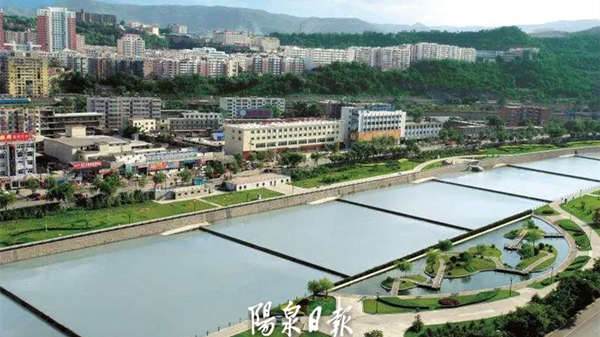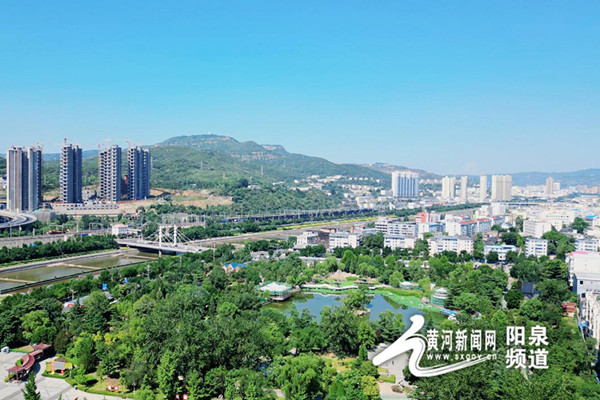Project Profile and Development Plan of 2 x 200,000 t/a Coal-to-Ethylene Glycol of Yangquan Coal Industry Group Pingding Chemical Co, LTD.
I. Corporation Overview
The 2 x 200,000 t/a Coal-to-Ethylene Glycol project of Yangquan Coal Industry Group Pingding Chemical Co, Ltd. ("the Group") is the key project of Yangquan Coal Industry Group. It reflects the transformation and green development ideals of the provincial Party committee and provincial government, and is the largest industrial structure transformation and development project in Yangquan City, as well as an integral part of the Group's plan to implement supply-side structural reform, promote the development strategy of "one main body, two flanks and seven parts", and produce millions of tons of ethylene glycol.
The Coal-to-Ethylene Glycol project is a new type of coal chemical project under intensified encouragement of the National Development and Reform Commission as part of industrial restructuring. Ethylene glycol (EG), also known as glyc, is a very important organic raw material in the petrochemical industry. It is mainly used in the manufacture of polyester fibers, antifreeze, chemical intermediates, explosives, water mixtures, solvents, lubricants, and plasticizers, among other applications.
In recent years, the rapid growth of the downstream industry, especially polyester fiber and PET packaging materials, has continuously boosted demand for EG. At the moment, EG, with broad market prospects, is the most consumed polyol in the world.
II. Project Progress
The project commenced on September 20, 2014 and was mechanically completed in September 2016. On 30 April 2017, the whole Phase I installation was ready and qualified EG products were produced. Currently, equipment insufficiencies and the environmental protection system are being upgraded.
III. Project's Main Advantages
1. Market Advantages. There is a huge deficiency in the production capacity of EG in China. In 2016, China consumed 13.28 million tons of EG, of which 4.51 million were produced domestically and 8.77 million were imported; a rate of 65.9% dependency on foreign resources. The need for imports will be a main focus in the near future, because the domestic market's demand is still not met despite many completed projects of coal-to-EG and others under construction in China. By the end of 2016 a total capacity of 3.72 million tons and an output of about 1.1 million tons from 21 non-petroleum projects were achieved. The current under-construction and planned capacity is 3.7 million tons (12 projects).
2. Technical Advantages. The adopted "Jinhua Gasifier", jointly developed and designed by Yangquan Coal Industry Group and Tsinghua University and manufactured by the Group's chemical machinery, is widely applicable and reliable in operation, and can be completely applied to Shanxi high-AFT coal to thoroughly solve gasification of Shanxi’s "Three High Coals": high ash, high ash fusion temperature and high sulfur.
The EG machinery, with the patented EG synthesis technology of the East China University of Science and Technology/Shanghai Pujing Chemical Industry Co., Ltd., applies advanced and reliable technologies and energy-efficient designs throughout a well-organized process.
The machinery utilizes highly intelligent centralized control technology for remote on-line monitoring and intelligent fault analysis.
3. Cost Advantages. Compared with petroleum-based EG processes, the project is highly effective in energy consumption and costs thanks to multiple energy coupling and energy-saving technologies. The full cost of producing EG from coal equals that of producing petroleum at $40 a barrel. According to the current market price, the total cost is about 5,300 yuan/ton, and the gross profit is about 1,500 yuan/ton when petroleum is replaced by coal. The annual consumption of 700,000 tons of coal after the production of 200,000 t/a EG in project phase I is expected to add 1.303 billion yuan in sales income, realize 380 million yuan in profits and taxes, and employ 700 people.
IV. Development planning
As a new coal chemical industry company, Pingding Chemical Co., Ltd adheres to the Group's ideal of "one main body and two flanks in diverse growth", and is also an integral part of the production and manufacturing base of one million tons of EG from coals in the "three million" chemical undertakings of the Group. Working today for a better future, the company employs the development strategy of "three steps in five years".
Main content: one-time planning and phased implementation under the overall goal of a "coal-based synthetic chemical fiber industry chain".
Firstly, the period of 2014-2018 focused on construction and trial production and required completion of project phase I along with preparation for phase II. The overall efficiency and benefits of machinery were taken into full account while intensively utilizing land resources, optimizing the process flow, reducing the unit consumption of products, and extending the industrial chain. The next step in this period was to determine phase II’s construction scheme and complete the basic design and procurement of large-scale equipment.
Secondly, the period of 2018-2020 will see the start of phase II — EG of 300,000 t/a and methanol of 100,000 tons — based on phase I's stable realization of "fully consumption of what was produced" in methanol and a total EG capacity of 500,000 tons. A supporting project of 750,000 tons of polyester and spinning (purchased solid PTA) will achieve the goal of 50% on-site deep processing of EG.
Thirdly, the period of 2020-2022 will complete the industrial chain of coal-based fiber from EG and aromatic hydrocarbons to spinning on the basis of the completion and operation of the above-mentioned project. Within the timeframe technologies and methods must be upgraded to reach a capacity of 600,000 tons EG, and machinery must be replenished to reach 500,000 tons of aromatic hydrocarbons from coal and 650,000 tons of PTA and the replacement of purchased PTA.
Through the implementation of the "five-year and three-step" development strategy, the Group will complete an industrial chain of coal-based chemical fiber and build domestically well-known and large-scale chemical parks to extend the work in diverse directions.





